Seeing Switzerland: A Cross Cultural Conversation
Switzerland carries the burden of being everyone’s idealized landscape, speaking actually as well as metaphorically. It has the highest and most beautiful mountains in Europe; the purest milk, cheese, and chocolate; the soundest banking system; and a seeming ability to steer a path of neutrality through the political storms of the 20th and 21st centuries. Its cities are clean and organized; the trains run on time; and there is no clutter, oddness, or distress. The national politics are run by committee and avoid the bitter partisanship that has diminished politics to rancor elsewhere. So, a perfectly beautiful landscape, and a perfectly realized State.
Real places seldom stand up to such idealizations, of course. This short visual conversation takes place between two photographers, one Swiss and the other American. Having worked together on visual projects for more than twenty years, we finally took on the interesting challenge of interpreting one of our two cultures.
Click the thumbnails for a slideshow
For Ricabeth Steiger, the curator of historical photography at the Swiss National Museum, visual representation of Swiss society is a professional preoccupation. The most ambitious photo exhibitions organized by her museum interpret Swiss landscape past and present and deconstruct the omnipresent myths. The ethnographic history of Switzerland must represent both what has taken place in the past and how the Swiss construct that history.
Speaking from the American side of this conversation, I can attest to the allure of the Swiss myths and the more interesting sociological reality that has gradually revealed itself. For example, the myth of landscape presents mountains extending as a blanket of purity from one’s imagination to faraway borders. But the Swiss landscape is actually quite small, crisscrossed with electrical lines, and etched with startling towers. A tiny percentage of the Swiss actually live in the mountains, but the second homes of wealthy Germans are increasingly common in that landscape. Fertile valleys near the major cities have been transformed to suburban sprawl that makes even Americans wince. And even the chocolate, as good as legend has it, is made largely from milk from outside Swiss borders.
Like many northern European countries, Switzerland struggles with issues of inclusion and exclusion. Switzerland was an emigrant country in the 19th century, due to land scarcity, famine, and religious persecution. Now Switzerland attracts immigrants from Germany, Eastern Europe, the Balkans, Italy, Turkey, Africa, and Asia, and struggles to integrate new voices, cultures, and politics into a very strong traditional definition. In this way, Switzerland is a fully European social landscape, sharing these challenges with its neighbors.
What strikes me as an American sociologist and photographer, is the endearing visual quirkiness of Switzerland, the oddly tuned reality behind the myths and the social success represented in the efficiency, order, and quality one finds everywhere. Most interesting are the tensions between landscape and development; between order and disorder, between straight lines and curves. Our photographs collectively explore some of these tensions, as reflected by the lenses of a cultural insider and a sociological visitor.
A Note On Method
These photographs were made with swing-lens panorama cameras, a technology dating to the first decades of photography. The attempt to see as widely as human sight-about 150 degrees-is usually achieved with a wide angle lens, although the mechanical optics necessary to view reality that widely push the foreground into the distance and bend vertical lines in the image. The swing lens camera uses a conventional lens but pivots it on a turret across a long piece of photographic film. The cameras look a bit like Darth Vador’s helmet and are usually mounted on a tripod. They are esoteric, prone to breakdown, and challenging to use.
As the lens pivots it sees with equal sharpness from left to right, and this distinguishes it from human sight. Because the cones that create vision are concentrated in the center of the eye, we see most clearly in the field of view directly in front of us and much less clearly on the sides of our vision.
As social scientists interested in the visual, Ricabeth and I feel the swing lens panorama has a unique capacity to capture the contexts of social life; that is, the surrounding environments and the human actions they contain. It also allows us to see events that are happening simultaneously in the 150 degree field of vision. There is a special feeling to these images; they seem like human sight but the sharpness at the edges is almost disturbing. They are as much about seeing as the subjects they record and make us wonder: how would an insect or a familiar mammal view the reality we construct so casually through human sight?
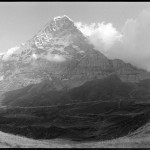

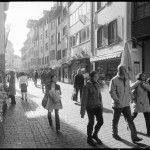
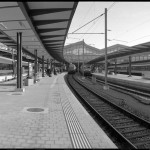
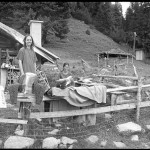
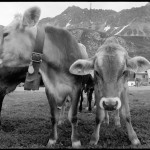
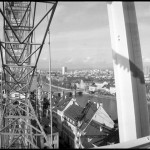
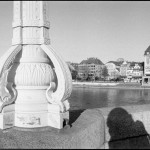
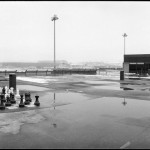
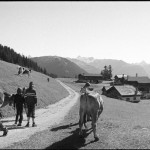

Comments 1
Idealizing Switzerland » Sociological Images
February 27, 2010[...] Winter 2010 Contexts photo essay “Seeing Switzerland: A Cross-Cultural Conversation” investigates the socially construction of Switzerland as an “idealized [...]